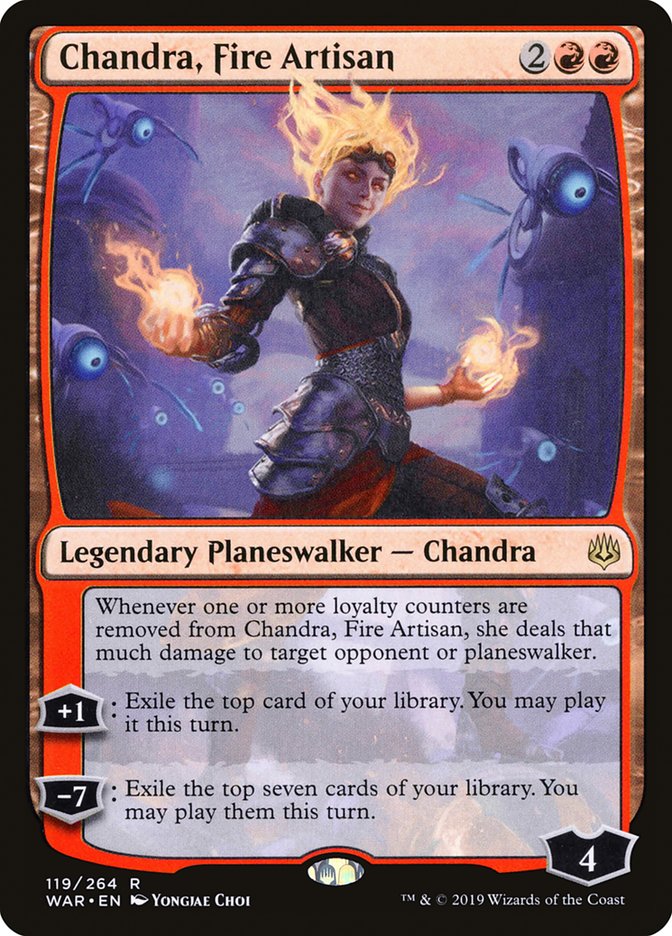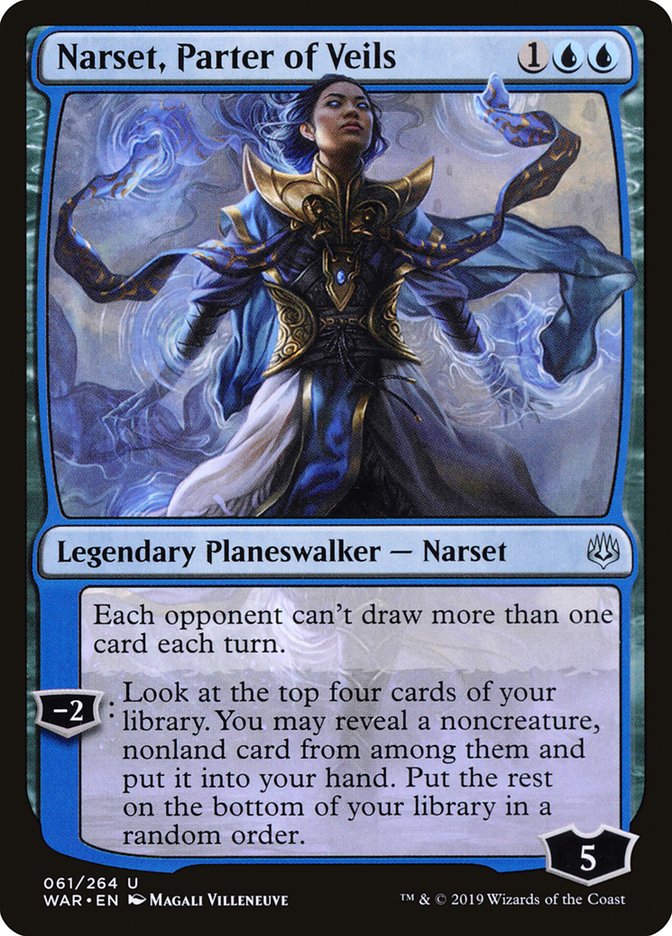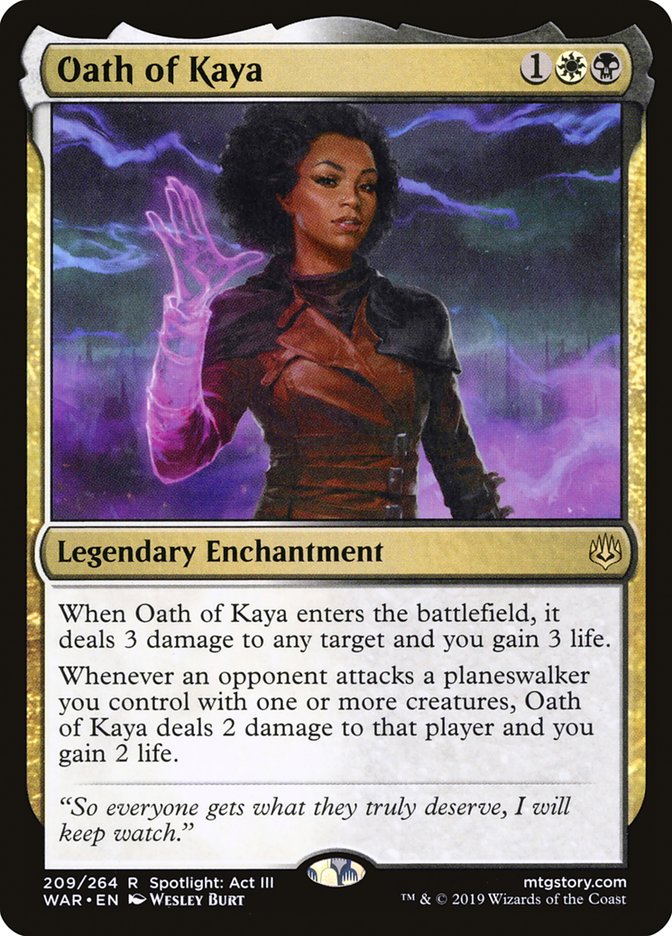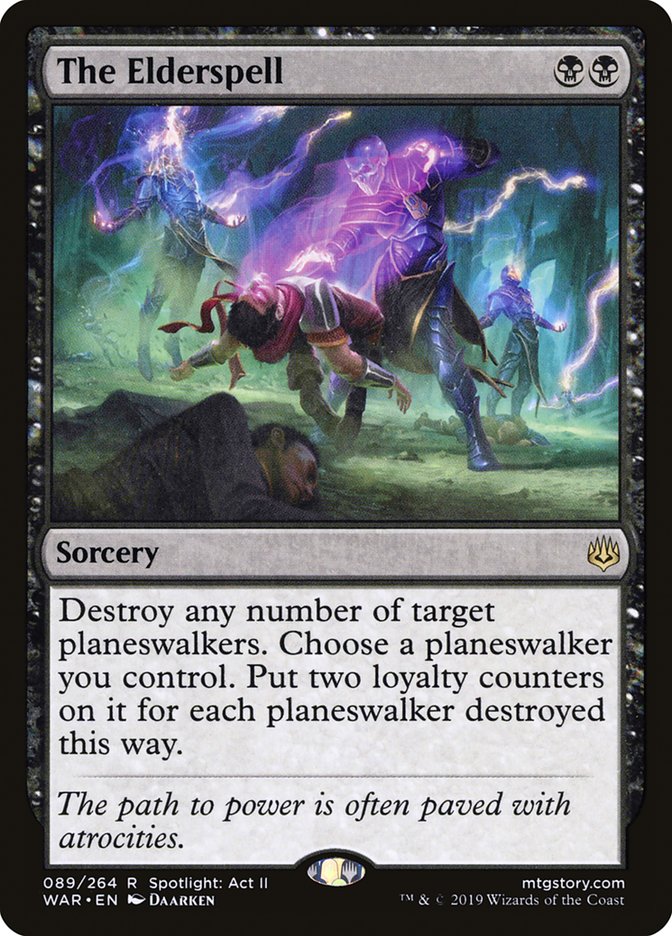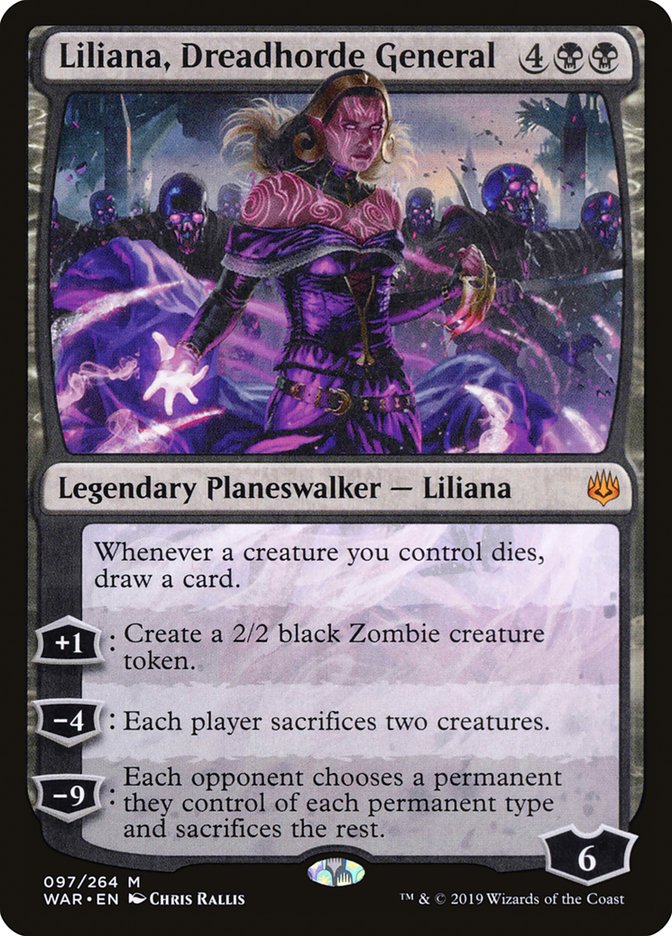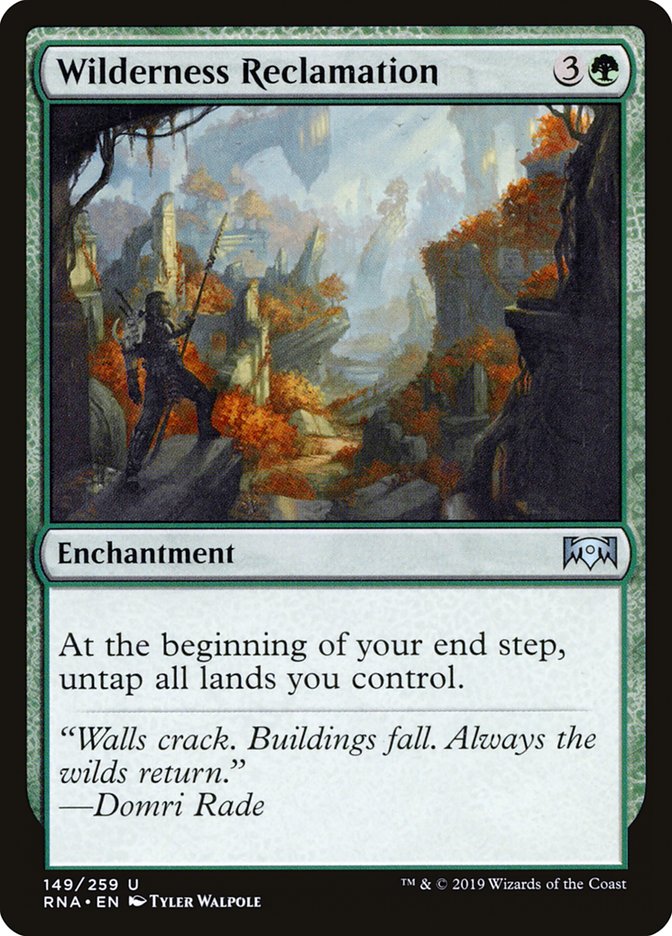Over the course of eighteen rounds of competition at SCG Richmond, I was able to garner tons of new information via one of the most underappreciated and underutilized skills in all of competitive Magic: observation. The amount I learn from my time as a careful observer of the SCG Tour never ceases to amaze me. Being able to take in all sides of the action, ask questions of the players, and see the narrative of the tournament unfold round by round feels like a superpower. As such, I’m ready to keep with tradition and bring you the authoritative list of single-card winners and losers in the aftermath of SCG Richmond.
Contenders
If we’re going to talk about the winners of this event, we’d better start with the champ himself, Will Pulliam.
Creatures (20)
- 4 Fanatical Firebrand
- 4 Ghitu Lavarunner
- 4 Goblin Chainwhirler
- 4 Viashino Pyromancer
- 4 Runaway Steam-Kin
Planeswalkers (4)
Lands (20)
- 20 Mountain
Spells (16)

Will showed up to battle with a full four copies of Chandra, Fire Artisan in his maindeck, and was rewarded with the trophy. I had the chance to speak to Will prior to the elimination rounds, and he estimated there were at least eight games he would have lost had those Chandras been Experimental Frenzies. Instead, Will leveraged the powerful new planeswalker to a dominant performance and illustrated one of the most important principles about Magic card evaluation—your efforts to rank new cards will always fail when you attempt them in a vacuum.
I don’t think anyone, even Will, would try to make the argument that Chandra, Fire Artisan is more powerful than Experimental Frenzy. However, you can certainly make the argument that Chandra is the correct card to play in the present metagame. With all the focus squarely on Simic Nexus coming into SCG Richmond, enchantments were on everyone’s mind. Experimental Frenzy remained as powerful as ever on the battlefield. However, it was unlikely to remain there for long. Between Teferi, Time Raveler; Mortify; Return to Nature; Knight of Autumn; and Vivien Reid, the Top 8 was loaded with functional answers to Experimental Frenzy. Chandra proved to be a much tougher out, and that should continue headed into SCG Syracuse.
Take it directly from Will:
Throughout War of the Spark preview season, we attempted to review all of the new planeswalkers on The GAM Podcast. We always put forth the qualifier that planeswalkers were the hardest cards to evaluate without playing them, and there was certainly going to be one that we got 100% wrong. Well, turns out we got several wrong, but none more so than Narset. A card I initially wrote off as a “bad Divination” has proven itself as a multi-format all-star in the span of a single week. Narset changes the way so many decks are forced to play the game, and is probably closer to Dig Through Time than Divination.
The thing that really shone throughout the weekend was the fact that Narset was completely acceptable in what should have been awful matchups. Its ability to deny Mono-Red Aggro access to its Risk Factors came up time after time, and even when it was bad, it was still a three-mana Azcanta activation that gained three life. Against decks like Esper Control and Simic Nexus, the card draw-stifling ability is nothing short of game-breaking, and Narset will almost always get to provide two choice cards on top of it. The immediate task for players is figuring out just how heavily control archetypes can lean on Narset for their card advantage fix.
Creatures (5)
Planeswalkers (7)
Lands (25)
Spells (23)
- 4 Opt
- 1 Negate
- 3 Vraska's Contempt
- 1 Chart a Course
- 3 Cast Down
- 4 Thought Erasure
- 2 Cry of the Carnarium
- 3 Enter the God-Eternals
- 2 Tyrant's Scorn
Sideboard

Austin Collins would suggest that you can go pretty far down that rabbit hole, and his decision to include four maindeck Narset, Parter of Veils was truly prescient. I also love the usage of Kefnet, God-Eternal here, as the card is too powerful not to find a good home. Austin’s work goes a long way to giving these Dimir decks a real identity, and moving them to be much more than a limited version of Esper Control.
Messing with timing windows in a format where two of the best decks are designed to play at instant speed seems like a no-brainer. Teferi has so much more to give, though, and while I had previously envisioned this card as a sideboard option, clever deckbuilding has started to suggest Teferi, Time Raveler is destined to be one of the single most important cards in the format.
Creatures (29)
- 4 Llanowar Elves
- 2 Shalai, Voice of Plenty
- 2 Knight of Autumn
- 2 Deputy of Detention
- 4 Hydroid Krasis
- 4 Growth-Chamber Guardian
- 4 Frilled Mystic
- 4 Incubation Druid
- 3 God-Eternal Oketra
Planeswalkers (7)
Lands (24)

Creatures (29)
- 4 Llanowar Elves
- 2 Shalai, Voice of Plenty
- 2 Knight of Autumn
- 2 Deputy of Detention
- 4 Hydroid Krasis
- 4 Growth-Chamber Guardian
- 4 Frilled Mystic
- 4 Incubation Druid
- 3 God-Eternal Oketra
Planeswalkers (7)
Lands (24)
Sideboard

The rise of these three-mana planeswalkers is pointing to a real need for increased early battlefield presence and these Bant decks can provide that while also leveraging Teferi, Time Raveler themselves. Bant Midrange uses every part of Teferi, keeping up pressure by removing blockers as well as rebuying Frilled Mystic for additional countermagic. If these versions of Bant Midrange have a weakness, it lies in a tough Mono-Red Aggro matchup, but I think there are options available to shore up that weakness as well.
Creatures (25)
- 4 Llanowar Elves
- 4 Wildgrowth Walker
- 4 Merfolk Branchwalker
- 4 Jadelight Ranger
- 1 Shalai, Voice of Plenty
- 1 Knight of Autumn
- 2 Trostani Discordant
- 4 Hydroid Krasis
- 1 God-Eternal Oketra
Planeswalkers (8)
Lands (24)
Spells (3)

I’ve loved seeing the Hearthstone players such as Sjow and Savjz throw themselves into Magic wholeheartedly, and I think you often see the influence of Hearthstone deckbuilding (the tech slots!) in their card choices. Here, Sjow has wisely stuffed the explore package into the existing Bant builds, and I think he just nailed the perfect configuration for this metagame. While Sultai Midrange will have a hard time policing Mono-Red this go-around due to an awful Simic Nexus matchup, I expect Bant to have no such problems. This is my pick for a breakout deck headed in to SCG Syracuse.
Teferi, Time Raveler has also been terrorizing Arena as a new inclusion in Azorius Aggro, so don’t be surprised when that list starts showing up in paper as well.
With Mono-Red Aggro establishing itself as Public Enemy No. 1, it’s not hard to see the value of additional lifegain. The value of Oath of Kaya goes deeper than that, though. First, it’s a win condition that you can loop via your Teferis. This is nice, as it’s a widely functional spell that gives you a way to beat the undeckable Nexus of Fate decks without going as far as playing a Liliana or Ugin. The mid-game synergy with Teferi, Time Reveler is great as well, since you’re happy to bounce and cast multiple Oaths against Mono-Red Aggro.
More importantly, Oath of Kaya is an additional way to interact with your opponent’s three-mana planeswalkers. A Moment of Craving isn’t going to unlock your Chemister’s Insights against your opponent’s Narset, Parter of Veils, but Oath of Kaya sure can.
Planeswalkers (6)
Lands (25)
Spells (29)

Planeswalkers (7)
Lands (26)
Spells (27)

Both of these players did a lot right in Week 1, but I really like a mishmash of the two decks. Something closer to Zach’s card advantage suite combined with Edgar’s removal suite leaves me almost exactly where I’d like to be for my own Esper list.
Planeswalkers (7)
Lands (26)
Spells (27)

Battlefields of three or four planeswalkers are quickly becoming commonplace. On top of that, folks are starting to get really excited about a wild-looking Zac Elsik/Ben Ragan brew.
Creatures (4)
Planeswalkers (18)
- 2 Karn, Scion of Urza
- 2 Teferi, Hero of Dominaria
- 2 Dovin, Grand Arbiter
- 2 Dovin, Hand of Control
- 3 Teferi, Time Raveler
- 1 Kasmina, Enigmatic Mentor
- 1 Saheeli, Sublime Artificer
- 3 Narset, Parter of Veils
- 2 Ugin, the Ineffable
Lands (26)
Spells (12)

While Ben had a tough go of things at the end of Day 1, Zac Elsik himself played this Azorius SuperFriends list to a second-place finish at a weekend MCQ. The Elderspell was clearly designed as a “break glass in case of planeswalker-based emergency” safety valve, and that emergency is rapidly approaching. A copy or two of The Elderspell in your sideboard might just steal you some matches this weekend. It’s a gamble, but there’s no denying the game-swinging effect a multi-target Elderspell can have. And if you’re Esper Control, you can even live the dream and “ramp” to an instant Teferi, Hero of Dominaria ultimate. The story equity alone is almost enough to merit inclusion!
Pretenders
This column may as well be called “Bryan Eats Humble Pie for 2000 Words.” I started by discussing the problem of card evaluation in a vacuum, and my assessment of Liliana, Dreadhorde General went wrong for exactly that reason. Liliana, Dreadhorde General is the green midrange mirror-breaker we’ve all been waiting for. The problem here was that there were just no green midrange mirrors. Going forward, I expect the rise of Bant Midrange to give Liliana a chance to find success, but if the new version of green midrange is more Frilled Mystic and less Vraska’s Contempt, Liliana may struggle to ever find a home.
This is the big one, and really, Wilderness Reclamation’s failure to convert a single Top 8 appearance is the single largest factor shaping the metagame going forward. The narrative seems to be headed towards labeling Simic Nexus’s debut weekend an abject failure, and Temur Reclamation and the Ral, Storm Conduit / Expansion combo weren’t even on the map.
I would push back against this perception of failure somewhat, as Simic Nexus made up 25% of the Top 16, but regardless of how we choose to label the deck’s performance, it is clear it was not the best choice for SCG Richmond. This leaves Reclamation decks at a crossroads, as the recipe for success against the archetype is now known. The all-out aggression of Mono-Red leaves Simic Nexus players at a loss, and with the addition of Teferi, Time Raveler and Narset, Parter of Veils, Esper Control has gone from a highly favorable matchup to a very even one.
If Simic Nexus is going to continue to be a player, it will have to look for new solutions to the Mono-Red decks, and hope that the decks that rise up to prey on Mono-Red are ones that Simic Nexus has favorable matchups against. As I previously said, this will be an uphill battle. Bant Midrange is far from the slam-dunk matchup that Sultai was, and Teferi, Time Raveler is an omnipresent source of pressure. It’s beatable, but at a cost to consistency and other matchups.
Simic Nexus began War of the Spark Standard as the best deck and punished all of the cute new things that everyone hoped to do with their War of the Spark toys. After just one week, it has been effectively answered. Does this mean there is room in the metagame for previously oppressed midrange strategies like Bolas’s Citadel, Prime Speaker Vannifar, or even old-fashioned Sultai Midrange? Or will Simic Nexus players successfully tune their deck to overcome a new threat?
I know I can’t wait for SCG Syracuse to find out.


